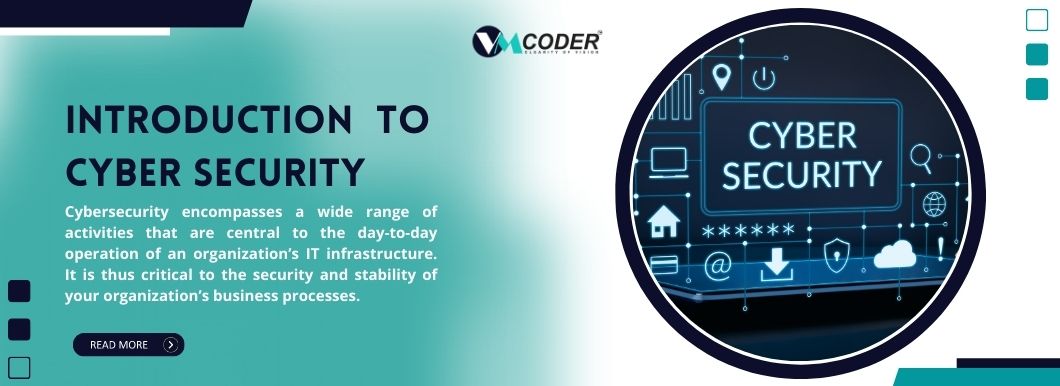Introduction To Cyber Security
Cybersecurity encompasses a wide range of activities that are central to the day-to-day operation of an organization’s IT infrastructure. It is thus critical to the security and stability of your organization’s business processes. This is usually achieved through digital security technology, including firewalls, intrusion prevention systems (IPS), anti-virus software, anti-malware software, encryption, and authentication.
It includes the design and implementation of policies and procedures that identify risks associated with the use or handling of information technology resources; ensure that appropriate measures are in place to minimize or eliminate cyber risks; provide access to authorized information resources; protect against unauthorized disclosure or use; ensures adequate backup procedures are implemented; implements disaster recovery plans to ensure continuity of operations in the event of a failure or disaster; maintains records related to system security controls; conducts periodic reviews to ensure compliance with applicable laws and regulations.
The strategy should include a detailed plan for protecting the organization and its assets from cyberattacks. It should also address threats from insiders and external actors, such as hackers and nation-states. A strong cybersecurity strategy must be comprehensive and comprehensive enough to cover all types of risks, including those involving the physical security of equipment, people, property, and data.
A well-designed cybersecurity program needs to be built on understanding how the organization works, what it does (and doesn’t do), who uses it, and how it communicates with other entities outside the organization. This will enable IT, professionals to design a security program that addresses the needs of internal users and external entities with whom they interact regularly – e.g., partners in the supply chain or customers who use the organization’s products or services.
Importance of Cybersecurity
The business world has seen a dramatic rise in cyberattacks over the past few years. As a result, companies are becoming increasingly aware of their vulnerability to attacks and how they can protect themselves against them.
Several factors drive this awareness:
• The growing number of threats makes it important for companies to understand how to protect themselves from these attacks.
• Businesses realize they don't have enough time or resources to implement comprehensive security solutions independently. Instead, they need help from technology vendors with products that meet their specific needs and allow them to scale as needed.
As more devices, programs, and data are brought into the enterprise, the need for effective security continues to grow. Ensuring that all devices and programs have been updated to support current operating systems and software is important for various reasons.
The key to achieving this goal is to deploy a strong security posture that enables organizations to protect their data from unauthorized access or misuse. This includes implementing strong authentication mechanisms such as two-factor authentication (2FA).
Elements of Cybersecurity
There are many elements of Cybersecurity. The first is the infrastructure, which includes all the systems and devices that make up a business’s network. These include data centers, servers, workstations, and endpoints (phones and computers).
The second section is more closely related to what most people think about when they hear “cybersecurity”: applications. Applications are programs that run on your computer or server and perform specific functions such as creating documents or sending emails.
The third section is people — specifically those who manage organizations' networks and devices. This includes IT professionals such as network administrators, security officers, help desk staff, and other members of an organization’s IT department who must manage security issues across their entire network. All of the elements are as follows-
- Application security
- Information or data security
- Network security
- Disaster recovery/business continuity planning
- Operational security
- Cloud Security
- Critical infrastructure security
- Physical security
- End-user education
Maintaining Cybersecurity
The cyber threat landscape continues to evolve, and the threat landscape is constantly changing. Organizations must implement a strong cybersecurity program that incorporates a robust risk management strategy to keep up with these changes and stay ahead of the game. However, it's not enough to just be prepared for a cyber attack. It's also important to know how to respond when one occurs.
As vulnerabilities are discovered and exploited, organizations must continue developing new defensive measures and adjust accordingly. Cybersecurity should be considered a strategic initiative that is continually evolving and improving over time. This means you must consider organizational change and personnel development as part of your plan for success.
The first and the most important thing to secure your organization against cyber threats is understanding the risks you face and how they could affect your employees, customers, and business. The second step is understanding how those risks impact your business and what actions you can take to mitigate them. This paper provides an overview of the most common cyber risks organizations face and outlines some steps you can take to mitigate these risks.
Organizations need to move beyond reactive and incremental approaches to deal with threats as they become more integrated and complex. The goal should be to build security into the fabric of an organization's operations rather than as an afterthought.
This is not easy, but it's important because it will help organizations better prepare for and respond to cyberattacks.
The first step is defining what constitutes a threat. For example, an attacker who uses social engineering tactics to obtain personal information from employees might be considered a threat by some organizations but not by others.
Once you have a definition of a threat, you can start categorizing them based on how likely they are to occur and what potential consequences they may have for your organization if they do occur.
Types of Cybersecurity Threats
Malicious software (malware). Malware is software that is designed to damage or disrupt a computer system. It can include viruses, worms, Trojan horses, keystroke loggers, and spyware.
Electronic mail (e-mail) spam. E-mail spam is unsolicited messages sent by e-mail to advertise goods or services. Spam also includes junk mail, which includes promotional materials sent unsolicited through the postal service.
Phishing attacks. Phishing attacks are used by senders to obtain personal information such as usernames, passwords, and credit card numbers by using spoofed websites that mimic legitimate sites such as Yahoo! Finance, or eBay.
Written by :
Shweta Bhatia
Leave a Reply
Your email address will not be published. Required fields are marked *






